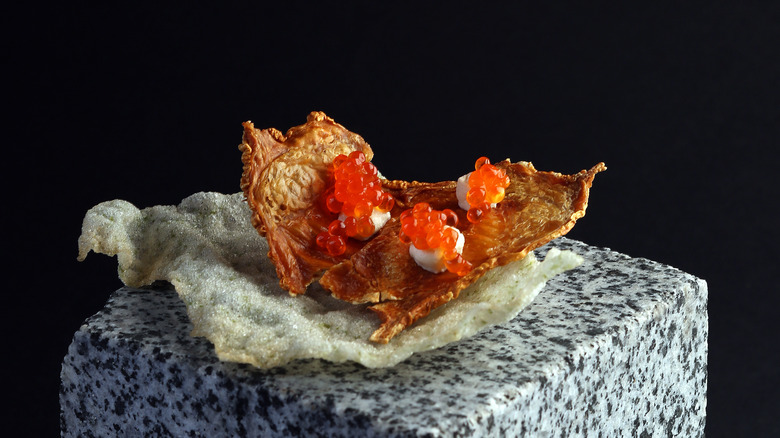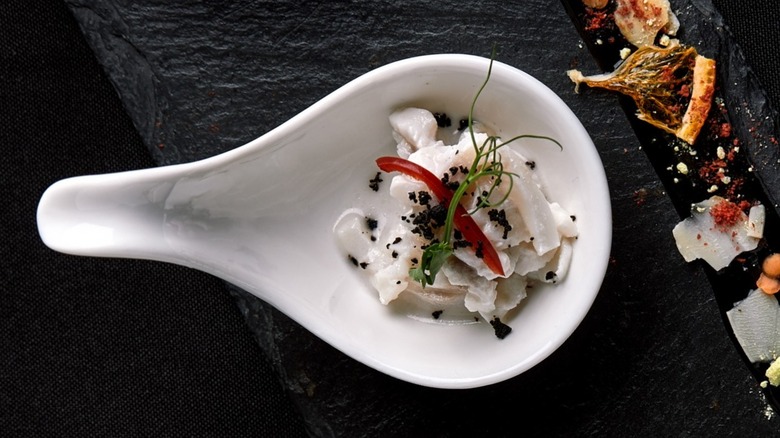Why High-End Restaurants Serve An Amuse-Bouche Before Your Meal
Ceviche served on a spoon, blini stacked with salmon and crème fraîche, a shooter of vichyssoise, dollops of mortadella mousse, or a cordial glass filled with Concord grape granita — these are just some of the many possible amuse-bouche choices that you might see at a high-end restaurant. Preceding the main course, these complex and creative little bites (also known as amuse-gueule) are often served in beautifully inventive ways. But, beyond delighting the eyes, these palate-pleasing morsels also function to enhance the dining experience.
More minuscule than an appetizer, an amuse-bouche is like an elevated version of a canapé or hors d'oeuvre. Different from a palate cleanser, which is served in between courses, an amuse-bouche is instead served before dinner as a complimentary, pre-dinner nibble. In other words, this unexpected gift from the chef de cuisine won't be included on the final bill, notes MasterClass.
A fairly new development, Chefin reports that amuse-bouche became part of the culinary repertoire during France's nouvelle cuisine movement during the 1970s. Since the approach centered on creativity and locality to produce light and regal fare — amuse-bouche fully encapsulated these principles. Interestingly, while many eateries may offer tiny tidbits, the tradition is still very much rooted in the hospitality of fine dining establishments, where it serves a few purposes.
An opportunity to showcase culinary skill and tantalize the tastebuds
First impressions are everything, which is why making a statement with a fantastic amuse-bouche is vital. Like a delicious welcome, Able Kitchen explains that it provides chefs a chance to demonstrate their culinary prowess through taste and presentation, single-handedly setting the tone for the rest of the meal.
Priming the palate is also a very real thing. Translated literally as "mouth-amuser," these tasty tidbits are teeming with big flavors, which works to tease the appetite and pique the interest of guests for what's still to come. In fact, aside from satisfying a guest's immediate hunger, the Michelin Guide explains that serving an amuse-bouche can even work to increase appetite by triggering saliva production, which also plays a role in positively impacting taste.
Additionally, there are also some pretty practical purposes of an amuse-bouche from an operational standpoint. According to The New York Times, it can provide an opportunity to take advantage of limited-edition market ingredients, act as a trial for new dishes, or even buy some time for back-of-house staff. With infinite purposes, the amuse-bouche is a crowd-pleaser, while serving as an indication of class and quality.

